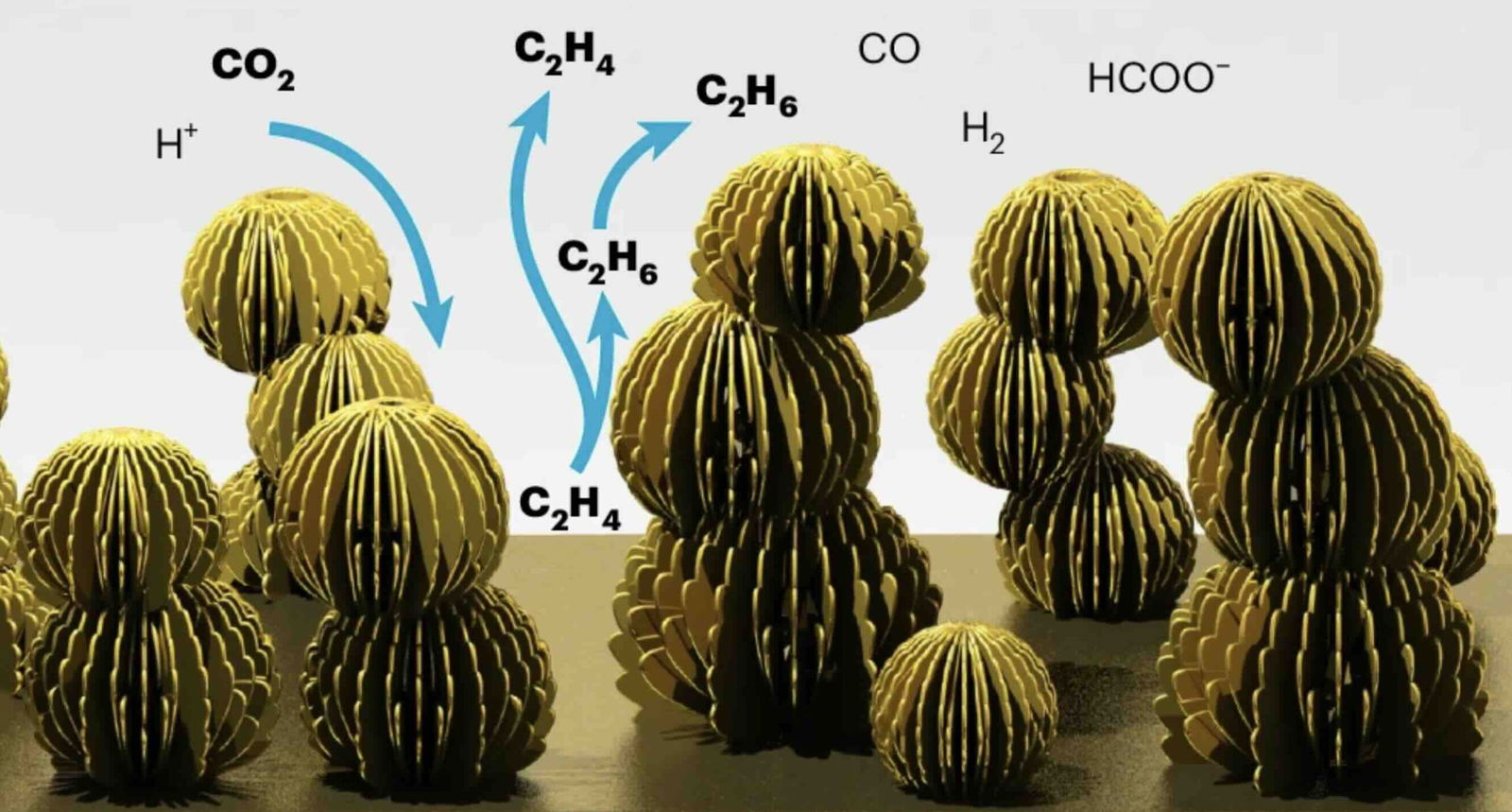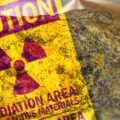Scientists have developed copper “nano-flowers” that mimic photosynthesis, offering a new way to turn carbon dioxide into fuel sources and chemicals, potentially transforming how we produce clean energy.
Scientists have developed small “nano-flowers” made of copper, attached to a solar cell “leaf” in a design mimicking how plants capture sunlight through photosynthesis. This breakthrough in solar power technology could support the energy demands of modern industries while reducing reliance on fossil fuels.
Clean Energy Grown on Leaves
At the heart of this advancement is a novel method for converting carbon dioxide (CO₂) into hydrocarbons, developed by researchers from the University of Cambridge and the University of California, Berkeley.
The system utilizes a highly efficient perovskite solar cell, which powers a copper nano-flower catalyst that transforms CO₂ into complex molecules such as ethane and ethylene—key components in fuels and plastic production.
Previous metal catalysts could only break down CO₂ into single-carbon molecules. The new nano-flower, however, enables direct conversion into multi-carbon compounds, significantly improving carbon utilization efficiency.
Crucially, this technology offers a sustainable alternative to fossil fuel-derived hydrocarbons. The carbon nano-flower generates energy-rich chemicals using a mixture of CO₂, water, and glycol—without releasing additional carbon emissions.
Advancing Clean Energy Research
The international team has a history of developing artificial leaves, seeking to replicate the wonder of photosynthesis, whereby plants consume sunlight to power their biological functions.
“We wanted to go beyond basic carbon dioxide reduction and produce more complex hydrocarbons, but that requires significantly more energy,” said Dr Virgil Andrei from Cambridge’s Yusuf Hamied Department of Chemistry, the study’s lead author.
An earlier attempt at demonstrating their technology involved ultra-thin leaves that were light enough to float in bodies of water. While the lightweight solar cells lay in their aqueous bed, they could bask in sunlight, which the devices would then collect as stored energy. The team tested these leaves in the River Cam, demonstrating their functionality in generating clean energy under real-world conditions.
Turning Waste Into Raw Material
Earlier versions of the technology primarily focused on splitting water into hydrocarbons, but high energy demands limited the process’s usefulness. To overcome this, the researchers incorporated silicon nanowire electrodes, which enabled the device to oxidize glycerol instead of water—a change that led to a 200-fold improvement in efficiency.
Beyond energy savings, the glycerol-based reaction also produces valuable chemicals used in pharmaceuticals and cosmetics, including glycerinate, lactate, and formate.
“Glycerol is typically considered waste, but here, it plays a crucial role in improving the reaction rate,” said Andrei. “This demonstrates we can apply our platform to a wide range of chemical processes beyond just waste conversion. By carefully designing the catalyst’s surface area, we can influence what products we generate, making the process more selective.”
Toward a Sustainable Future
Despite its advantages, the process still has room for improvement. Currently, only about 10% of the CO₂ introduced into the system is converted into hydrocarbons. The research team is working on refining the catalyst to increase this conversion rate and expand the range of chemicals the system can produce.
Ultimately, this technology could play a key role in a carbon-capture economy, repurposing CO₂ emissions into valuable resources while generating clean energy.
“This project is an excellent example of how global research partnerships can lead to impactful scientific advancements,” said Andrei. “By combining expertise from Cambridge and Berkeley, we’ve developed a system that may reshape the way we produce fuels and valuable chemicals sustainably.”
The paper “Perovskite-Driven Solar C2 Hydrocarbon Synthesis from CO2” appeared on February 3, 2025 in Nature Catalysis.
Ryan Whalen covers science and technology for The Debrief. He holds an MA in History and a Master of Library and Information Science with a certificate in Data Science. He can be contacted at ryan@thedebrief.org, and follow him on Twitter @mdntwvlf.

